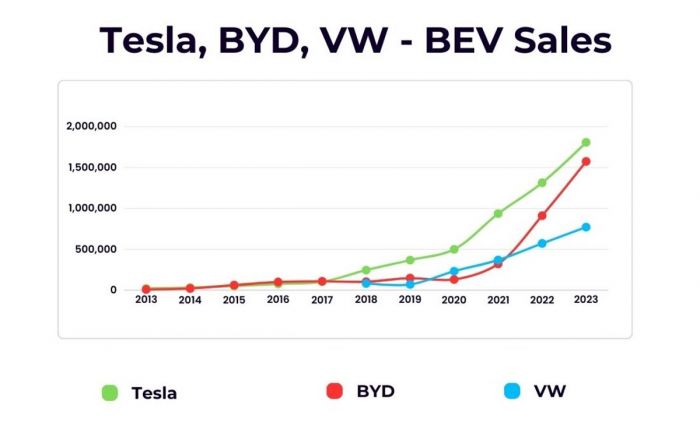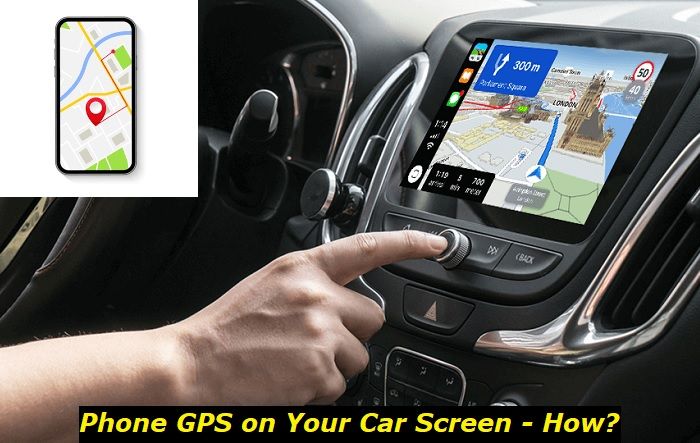The all-wheel-drive system in the Honda CR-V is a full-time, four-wheel drive system that automatically sends power to all four of the vehicle's wheels. The system uses an electronically controlled transfer case to distribute power from the engine to the front and rear axles. The all-wheel-drive system is designed to improve traction and stability on slippery or uneven surfaces.
All-wheel-drive system problem message highlights
- Common reasons:differential problem, low fluids in AWD units, sensor or actuator problems
- How to fix:read the codes, take it to a professional
- Possible consequences:driving the car further may destroy the AWD units
- Priority level:High
- Can you drive?Not recommended
- DIY repair:Impossible
- Repair price range:$200-$2,500

1. Insufficient or Poor-Quality AWD Oil
AWD oil is a vital component of any car's all-wheel drive system. Without it, the system may not function properly, or may even fail completely. AWD oil provides lubrication and protection for the system's moving parts, and helps to keep the system cool. If the oil is of poor quality, or if there is not enough of it, the all-wheel drive system may have problems.
With that, the possible symptoms of insufficient or poor-quality AWD oil in your Honda CR-V include reduced performance, strange noises from the all-wheel drive system, increased wear on the system's components, and AWD warnings in the dashboard. If these symptoms are ignored, they can lead to serious damage to the all-wheel drive system - and potentially, to the vehicle itself.
The best way to avoid problems with the all-wheel drive system is to use good-quality oil and to make sure that there is enough of it. If you are unsure about what type or how much oil to use, consult your CR-V owner's manual or a qualified mechanic. Filling the all-wheel drive system with too much oil can be just as damaging as not enough oil, so it is important to get it right.
If your Honda CR-V's all-wheel drive system is already having problems, the first step is to check the oil level and quality. If the oil is low or of poor quality, top it up or replace it with fresh, high-quality oil. Once you have done this, closely monitor the system for further problems. If the symptoms persist, or if the all-wheel drive system totally fails, take your car to a qualified mechanic for diagnosis and repair.
2. Faulty Transfer Case
The transfer case is a vital component of the all-wheel-drive system in a Honda CR-V. It is responsible for distributing power from the engine to the front and rear wheels. A problem with the transfer case can cause the "All-Wheel-Drive System" warning light to come on in the dashboard of the Honda CR-V.
Other symptoms of a faulty transfer case can also include a loss of power to the rear wheels, and an inability to move the vehicle in any direction. If the Honda CR-V is not able to move, it may be necessary to tow it to a repair shop.
The probable causes of this problem include a broken or seized gear, a failed motor, an issue with the wiring, a problematic transfer case control module, a damaged or worn transfer case chain, or a problem with the transfer case itself. The likely remedies to this situation include replacing the damaged or worn parts, resetting the transfer case control module, or replacing the entire transfer case. In some cases, parts replacement may be necessary due to irreparable damage.
3. Clutch Assembly Issues
The clutch assembly in a Honda CR-V is responsible for transferring power from the engine to the transmission. It consists of a flywheel, pressure plate, release bearing, and clutch disc. When the clutch pedal is depressed, the pressure plate disengages from the flywheel, and the engine can idle without engaging the transmission.
There are symptoms that may indicate an issue with the clutch assembly in your Honda CR-V. These include the "All-Wheel-Drive System" warning light on the dashboard, difficulty shifting gears, a grinding noise when shifting gears, and the clutch pedal feeling "soft" or spongy when depressed.
Some factors may be triggering these. One is that the clutch disc may be worn out and needs to be replaced. Another is that the pressure plate may not be releasing properly, which can be caused by a weak spring or damaged release bearing.
If the clutch assembly in your Honda CR-V is not functioning properly, it will need to be repaired or replaced. Depending on the severity of the damage, this may involve simply changing the springs, bearings, clutch disc, or pressure plate. The entire clutch assembly will need to be replaced in more severe scenarios.
4. Carbon Build-Up in AWD System
Carbon build-up is a common problem in all-wheel drive Honda CR-Vs. It can occur in various places, such as the engine, transmission, and differential. Carbon build-up can cause a variety of symptoms, such as an "All-Wheel-Drive System" warning on the dashboard, reduced fuel economy, and decreased performance.
The things that may lead to this issue are extended idling, short trips, and driving in stop-and-go traffic. The best way to prevent carbon build-up is to regularly clean the engine with a quality engine cleaner. If carbon build-up is already present, it can be removed with a professional engine cleaning service. In some instances, wherein the contamination has resulted in the corrosion of some components, parts replacement may be necessary.
5. Wheel Speed Sensor Errors
A wheel speed sensor, also called an ABS sensor, monitors the speed of each wheel and relays that information to the electronic control unit (ECU). The ECU uses this information to determine whether or not the wheels are slipping. If the ECU detects a wheel slip, it will send a signal to the all-wheel-drive system to engage.
Several symptoms may indicate a problem with the wheel speed sensor including the "All-Wheel-Drive System" warning light on the dashboard, a dragging feeling when braking, the vehicle tending to veer to one side when braking, the ABS activating more frequently than usual, and a significant decrease in fuel economy.
The key factors that mostly activate them include a build-up of dirt and debris on the sensor or damage in that part. If the problem is caused by the accumulation of dirt and debris, it can be solved by cleaning the sensor with a solution. A faulty wheel speed sensor will need to be replaced with a new one though.
6. Dirty or Worn Reluctor Ring
The reluctor ring is a metal ring with teeth that's mounted on the front axle of Honda CR-V all-wheel-drive vehicles. The ring serves as a sensor for the all-wheel drive system, which is responsible for distributing power to the front and rear wheels.
If your reluctor ring is dirty or worn, it can trigger the "All-Wheel Drive System" warning light on your dashboard. Other symptoms of a dirty or worn reluctor ring include reduced fuel economy, decreased traction, and increased tire wear.
Many things can hinder the proper operation of the reluctor ring including brake dust and debris building up on the component, damage from impacts or road debris, and wear out over time due to friction.
If your reluctor ring is dirty, you can try cleaning it with a soft cloth and some all-purpose cleaner. However, if the ring is damaged or excessively worn, it will need to be replaced. Replacement reluctor rings are available from Honda dealerships or aftermarket suppliers.
Failure to fix a dirty or worn reluctor ring can lead to reduced fuel economy, decreased traction, and increased tire wear. In some cases, it can also cause the all-wheel drive system to malfunction, resulting in loss of power to the front or rear wheels. Ultimately, this can cause an accident. Therefore, it's important to have a dirty or worn reluctor ring fixed as soon as possible.
7. Overheating AWD System
Overheating can occur due to the things mentioned in the earlier items here. When the all-wheel-drive system overheats, it can cause the transfer case to seize up, which will prevent the vehicle from being able to move.
The symptoms of an overheating all-wheel-drive system are usually comprised of a burning smell coming from beneath the hood of the vehicle, smoke coming from beneath the hood, and fluid leaks. If you notice any of these symptoms, it is important to take your vehicle to a qualified mechanic as soon as possible.
The most likely causes of an overheating all-wheel-drive system include a lack of proper maintenance, a clogged cooling system, and a faulty transfer case. To prevent this from happening, it is important to have your all-wheel-drive system serviced regularly. If the problem is not caught early and allowed to persist, it can cause irreparable damage to the transfer case, which will require it to be replaced.
8. AWD Control Module Malfunction
Lastly, the source of your troubles can come from the AWD control module. This can be due to physical damage to the module, software issues, damaged sensors, or wiring issues. Whichever the cause, the worn part should be repaired or replaced immediately by a qualified technician.
If the problem is not fixed, it can lead to more serious issues such as loss of power to the wheels, reduced fuel economy, and even engine stalling.
Conclusion
As shown here, there is no one-size-fits-all solution to an all-wheel-drive system problem in the Honda CR-V as there are many factors that may be causing the issue. Knowing the signs leading to each cause can help you easily pinpoint what's exactly wrong with your vehicle and come up with a more precise solution for each one though.
About the authors
The CarAraC research team is composed of seasoned auto mechanics and automotive industry professionals, including individuals with advanced degrees and certifications in their field. Our team members boast prestigious credentials, reflecting their extensive knowledge and skills. These qualifications include: IMI: Institute of the Motor Industry, ASE-Certified Master Automobile Technicians; Coventry University, Graduate of MA in Automotive Journalism; Politecnico di Torino, Italy, MS Automotive Engineering; Ss. Cyril and Methodius University in Skopje, Mechanical University in Skopje; TOC Automotive College; DHA Suffa University, Department of Mechanical Engineering






Add comment